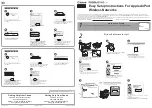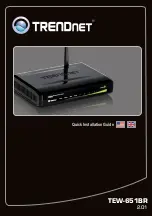
RF-WM-3220B1
Shenzhen RF-star Technology Co., Ltd.
Page 32 of 37
4.6.3 High Bit Error Rate
1. There are co-channel signal interferences nearby. It is recommended to be away from the interference sources or
modify the frequency and channel to avoid interferences.
2. The unsatisfactory power supply may also cause garbled. It is necessary to ensure the power supply reliability.
3. If the extension wire or feeder wire is of poor quality or too long, the bit error rate will be high.
4.7 Electrostatics Discharge Warnings
The module will be damaged for the discharge of static. RF-star suggest that all modules should follow the 3
precautions below:
1. According to the anti-static measures, bare hands are not allowed to touch modules.
2. Modules must be placed in anti- static areas.
3. Take the anti-static circuitry (when inputting HV or VHF) into consideration in product design.
Static may result in the degradation in performance of module, even causing the failure.
4.8 Soldering and Reflow Condition
1. Heating method: Conventional Convection or IR/convection.
2. Solder paste composition: Sn96.5 / Ag3.0 / Cu0.5
3. Allowable reflow soldering times: 2 times based on the following reflow soldering profile.
4. Temperature profile: Reflow soldering shall be done according to the following temperature profile.
5. Peak temperature: 245
℃
.
Table 11. Temperature Table of Soldering and Reflow
Profile Feature
Sn-Pb Assembly
Pb-Free Assembly
Solder Paste
Sn63 / Pb37
Sn96.5 / Ag3.0 /
Cu0.5
Min. Preheating Temperature (T
min
)
100
℃
150
℃
Max. Preheating Temperature (T
max
)
150
℃
200
℃
Preheating Time (T
min
to T
max
) (t
1
)
60 s ~ 120 s
60 s ~ 120 s
Average Ascend Rate (T
max
to T
p
)
Max. 3
℃
/s
Max. 3
℃
/s
Liquid Temperature (T
L
)
183
℃
217
℃
Time above Liquidus (t
L
)
60 s ~ 90 s
30 s ~ 90 s
Peak Temperature (T
p
)
220
℃
~ 235
℃
230
℃
~ 250
℃
Average Descend Rate (T
p
to T
max
)
Max. 6
℃
/s
Max. 6
℃
/s
Time from 25
℃
to Peak Temperature (t
2
)
Max. 6 minutes
Max. 8 minutes





































